
The cognitive-protective effects related to the consumption of a variety of fruits are supported by several intervention studies. This systematic review and meta-analysis compared the magnitude of effects following chronic (≥1 week) consumption of frozen, freeze-dried powder including extracts and juices of fruits, covering berries, cherries and citrus, on cognition and mood in adults.
PubMed, Web of Science, Scopus, and psycARTICLES were searched from inception until February, 2021. Inclusion criteria were randomised controlled trials assessing memory, executive function, psychomotor speed, mood and mini mental state examination in adult participants ≥18 years of age. Cognition was tested by global or domain specific tasks.
Out of 13,861 articles identified, 16 papers were included; 11 studies provided suitable data for meta-analysis. Fourteen studies reported improvement or trend for improvement in cognition, five studies assessed mood and one study supplementing grape juice found trend for mood improvement. From the meta-analysis, cherry juice supplementation was suggested to improve psychomotor speed by −0.37 of standardised mean difference (95% CI [−0.74, 0.01]) in reaction time (P = 0.05).
The meta-analysis did not sufficiently support a role for fruits or fruit forms to improve cognition and mood.

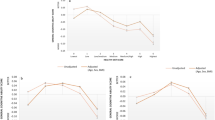
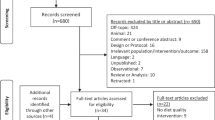
Age-induced cognitive decline is a common and important phenotype that is likely to be associated with increased disease risks such as dementia [1]. Ageing is associated with an increased susceptibility to chronic organ disease and decline of metabolic and immune functions which impact on the brain [1]. Aside from cognitive decline with ageing, an increased age-associated risk of neurodegenerative disorders such as dementia and Alzheimer’s disease is prevalent [2]. Therefore, the measurement and treatment of cognitive impairment is important due to the rising prevalence of dementia [2] and the benefits of early detection and prevention [3].
The rate of age-related cognitive impairment is mainly influenced by lifestyle behaviours, including diet [4, 5]. Fruits and vegetables represent a rich source of antioxidants including vitamins (vitamin C, B complex and E etc.), carotenoids and polyphenols, which have been shown to improve cognition [6,7,8]. A number of potential underlying mechanisms have been identified including the interaction of fruit polyphenols, carotenoids and vitamins with intracellular neuronal and glial signalling pathways, regulation of cerebral blood flow, and protection against neurotoxins and neuroinflammation [8,9,10]. A dose-response meta-analysis including nine studies (five cohort studies and four cross-sectional studies) with a total of 31,104 participants suggested approximately a 13% (OR = 0.87, 95% CI 0.77–0.99) reduction in cognitive impairment and dementia risk by an increment of 100 g per day of fruit and vegetable consumption [11]. A number of intervention studies also showed positive results indicating that intake of a range of flavonoid-rich fruit (e.g. blueberry, orange juice) improves both immediate and chronic cognitive performance or mood in older adults [12]. From a nutritional perspective, employing single whole foods instead of single components such as a supplement in interventions is more appropriate since synthetic single nutrient supplements are likely to be metabolised through different pathways to natural bioactive compounds [13].
Fruit can be consumed in a variety of forms following different processing methods, for example as fruit juices, smoothies, frozen fruit, and freeze-dried fruit powders and a recent paper emphasized the need for additional research assessing the effect of processed fruit on health, as fruit in processed forms (e.g. processed powder) provide consumer options whilst also reducing costs and food waste [14]. These different fruit forms could be an effective method to increase overall fruit consumption and it is important to determine the impact of different fruit groups and delivery forms on cognition in order to better inform the public. Therefore, the protective effects on cognition of whole fruit intervention or fruit intervention in different forms (e.g. powder, juice) instead of single molecules, such as polyphenols, are worth exploring.
Inconsistent findings have been reported on fruit interventions for cognitive effects [15, 16]. Whilst small sample size is indicated as a factor in null findings, the length of intervention as well as type and form of fruit may also be important. There could be metabolic difference between acute and chronic polyphenol-rich fruit interventions. The circulating metabolites, including polyphenol metabolites only remained in the cerebral blood flow (CBF) circulation for an approximately 1–2 h peak Cmax in plasma [17,18,19]. Emerging evidence from acute interventions employing a range of fruit juices and dried powders also indicates that polyphenol-rich fruit-based interventions e.g. citrus, grape, and blackcurrant juice and powder may benefit brain function [20,21,22].
In terms of nutritional value, fruit juices and dried fruit powders retain polyphenols, vitamins and minerals that are bio-accessible despite fibre and other nutrient losses that occur during processing [23, 24]. Fruit processing, such as smashing or thermal treatment, can damage the cell structure of whole fruit releasing cytoplasmic content that can make bioactive compounds more accessible for absorption [25]. Moreover, the presence of other constituents formed from the technological process or added from food matrix such as sugar could modify the bioavailability of the bioactives due to their ability to bind, solubilize, or stabilize [26]. Research has explored the difference in nutritional value and bioavailability of bioactives between whole fruit and processed fruit. One in vitro gastrointestinal digestion model study showed that mulberry juice still contains 60 - 70% of the anthocyanin content compared to unprocessed raw mulberry [27]. Furthermore, Kuntz et al. compared the bioavailability of selected anthocyanins from grape and blueberry juice with a smoothie and found no difference in plasma pharmacokinetics and recovery of the major anthocyanin species. However, significantly higher concentrations of the phenolic acid 3,4-dihydrobenzoic acid were shown after ingestion of the juice [28].
It is also worth noting that the cognitive domains categorised in intervention studies often vary depending on the cognitive ability that researchers intend to assess with different tasks applied [26]. Therefore, the impact of fruit interventions on specific cognitive domains cannot be quantitatively compared because of the large variability in the assessment tools and scoring interpretations. This concern has also been highlighted in other dietary trials assessing cognition [29]. Here, we have systematically reviewed and meta-analysed available fruit interventions to evaluate the chronic effects (≥1 week) of whole, powdered, and juiced fruit, specifically anthocyanin-rich berries and cherries, and flavonoid-rich citrus fruit on cognition in randomised controlled trials (RCTs). We also categorised specific tasks, depending on the assessed cognitive ability/domain for each RCT, in order to achieve quantitative comparison across RCTs. Due to the impact of mood on cognition, we also included assessment of mood outcomes here [30].
We searched for studies investigating the effect of berry, cherry and citrus fruit supplementations on cognition and mood. Berries so defined includes grapes, blueberries, strawberries etc; citrus includes oranges etc; cherry is categorised as stone fruit [31]. The following specific inclusion criteria were applied: (1) study design: RCTs; (2) subjects: adult subjects ≥18 years of age; (3) interventions: only chronic intervention studies for at least one week providing or promoting citrus, cherry, or berries including blueberry, grape, blackberry, raspberry and cranberry in various forms (e.g. their juices) to be consumed without acute supplementation prior to testing; (4) control: control groups without components of citrus, cherry, or berries, likely isoenergetic placebo group; (5) outcomes: cognitive function and mood (described below); (6) Only English-language and peer-reviewed articles were included. No restriction of publication year was applied.
This review is in line with the PICOS (population, intervention, comparator, outcome, study design) framework (Supplemental Table 1). The systematic review was conducted with a prospective protocol in accordance with Cochrane Handbook for Systematic Reviews of Interventions version 5.1 [32] and Centre for Reviews and Dissemination Guidelines [33] and was reported according to PRISMA guidelines [34] (Supplemental Table 2). The protocol was registered with PROSPERO, the International Prospective Register of Systematic Reviews (Registration number CRD42018091896). This protocol includes the investigation of the impact of these fruits on the risk factors of cardiovascular diseases, however the analysis has been reported elsewhere [35]. The search started from inception until February 2021 using PubMed, Web of Science, Scopus and psycARTICLES. The search strategy was as following: (Fruit OR citrus OR orange OR berry OR berries OR grape OR blueberry OR blueberries OR blackberry OR strawberry OR strawberries OR blackcurrant OR blackberries OR raspberry OR raspberries OR cranberry OR cranberries OR cherry OR cherries) AND (cogniti* OR memory OR “executive function” OR “reaction time” OR “psychomotor speed” OR attention OR mood) AND (trial OR intervention). Full electronic search strategy for PubMed was added in Supplemental Table 3.
Two researchers (YW and JLG) assessed articles independently for inclusion eligibility. All records were exported to EndNote X8 reference management software. Articles were moved to the next screening phase or discarded when full disagreement was reached. Any disagreements that were not resolved were handled by CHR and JKL serving as arbitrators. No disagreements occurred during the selection phase. The selection of eligible studies was based on 2 steps. Firstly, the title and abstract of each study was screened for relevance; full texts were then reviewed for those with potential for inclusion. Reference lists of included papers and relevant systematic reviews were also supplemented by hand-searching for additional articles.
Data were extracted by YW and JLG independent of each other, their selections for accuracy were reviewed in meeting. Corresponding authors were contacted via e-mail for requested information if there was missing data or for clarification. A pre-defined data extraction form was used to input study data, which includes information on (1) author and published year; (2) study design; (3) population characteristics (ethnicity, mean age, sex, mean BMI, health status and sample size at baseline); (4) treatment details (intervention type, length, dosage and frequency); (5) control group settings; (6) retention rate; (7) measured cognitive testing scores for both experimental group and placebo group at baseline and the longest post-intervention time point to avoid the bias of selectively choosing data (if applicable); (8) recording any data adjustments made for physical activity level among the included studies. Primary outcomes of the analyses were cognitive and mood scores after intervention and placebo treatment. The cognitive function measured in each study was categorized into memory, executive function and psychomotor speed domains for meta-analysis. The domain categorization in this review was based on a commonly used approach to understand cognitive domains [36].
Study quality was assessed by Cochrane Risk of Bias (RoB2) tool with assessment of five components, D1 of randomisation process, D2 of deviations from intended interventions, D3 of missing outcome data, D4 of measurement of the outcome and D5 of the selection of the reported results [29]. The overall risk of study bias was rated by low risk, some concerns or high risk. Grading of Recommendations Assessment, Development, and Evaluation (GRADE) evidence profile [37] was also applied to evaluate the risk of bias, inconsistency, indirectness, and imprecision of evidence in the aspects of assessed executive function, memory, psychomotor speed and mood in the RCTs included in the present review. Publication bias was also assessed by Funnel plot and Egger’s test where available [38].
R studio version 3.5.2 [39] and the package “meta” [40] were used to pool and meta-analyse data from collected studies. Means and SDs from endpoint and baseline data for intervention and control group were obtained from long-term (≥1 week) studies. All pooled results were presented as weighted mean difference or standardised mean difference with 2-sided P values and 95% of confidence intervals (CIs) in forest plots. Sensitivity analysis was performed to investigate the impact of studies adjusting for participants’ physical level and also the impact of juice quality on the meta-analysis results [41, 42]. However, insufficient study data was obtained to implement subgroup analysis to further explore the impact of the variations induced by study design and participant characteristics.
As shown in Table 1, based on the categorised cognitive tasks, meta-analyses investigating the effects of berry interventions on memory, executive function and psychomotor speed [43,44,45,46,47,48,49] and 2 cherry juice studies assessing executive function and psychomotor speed were carried out [41, 50]. Two grape powder studies assessing MMSE (Mini Mental State Examination), which measures cognitive impairment, were also included [51, 52]. Memory and executive function both encompass the essential cognitive processes in a person’s life [53]. Psychomotor speed assesses the individual’s ability to detect and respond to a stimulus and therefore reflects the relationship between cognition and physical movements [54].
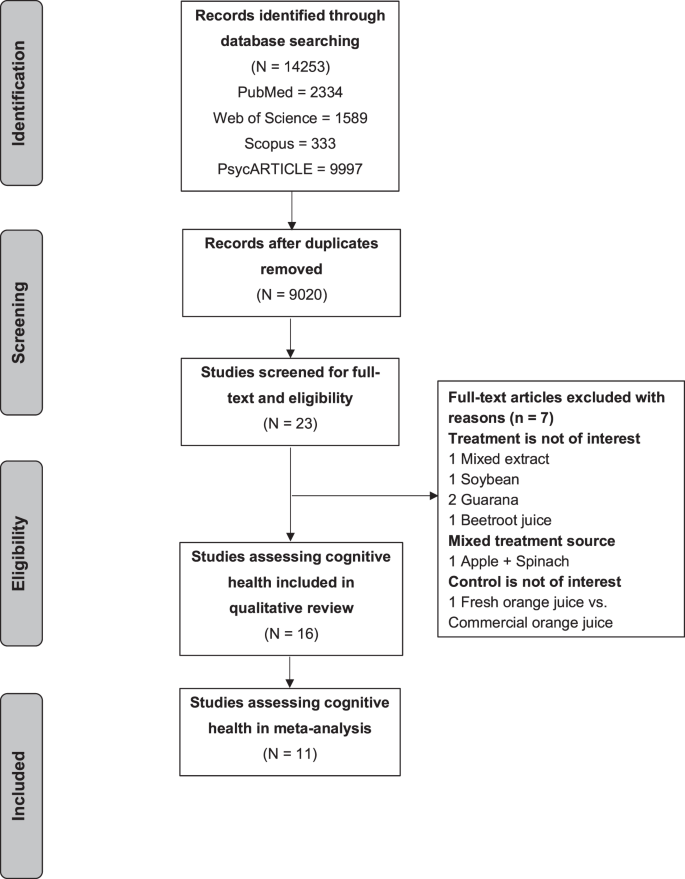
Among 16 included studies in this review (Table 2), there were 3 crossover RCTs [43, 57, 58] and 13 parallel RCTs [41, 44,45,46,47,48,49,50,51,52, 59,60,61]. The average age of the participants in the interventional and control group for included studies were 65.49 ± 15.78 and 65.26 ± 15.61 years old respectively. Thirteen of these studies recruited older participants (aged 60 years or older) [41, 44,45,46,47,48, 50,51,52, 57, 59,60,61]. Baseline characteristics of participants varied across interventions, 10 studies included healthy participants at baseline [41, 43,44,45, 47, 49, 51, 57, 58, 61], five studies included older people manifesting cognitive decline [46, 48, 52, 59, 60] and the remaining one study recruited diagnosed mild to moderate dementia [50].
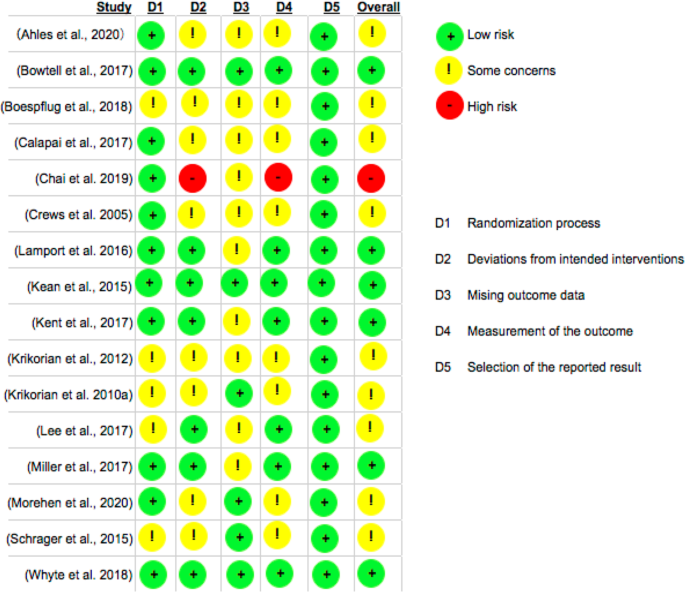
As summarised in Table 2 of GRADE evidence, there may be serious risk of bias in the assessment of executive function, memory and psychomotor speed in the RCTs included in this review. The risk of bias in the assessment of mood and the risk of inconsistency, indirectness, or imprecision of the assessment of executive function, memory, psychomotor speed and mood was not serious in the RCTs included in this review.
As shown in Table 3, all 16 included studies have assessed cognition with 14 studies reporting improvement or trend for improvement in cognition; 10 studies also assessed mood and one study supplementing grape powder found trend for mood improvement. The largest portion of studies supplemented frozen, juiced or powdered berries (12 out of 16 studies) with blueberries (n = 5) and grapes (n = 5) being the most intensively studied interventions.
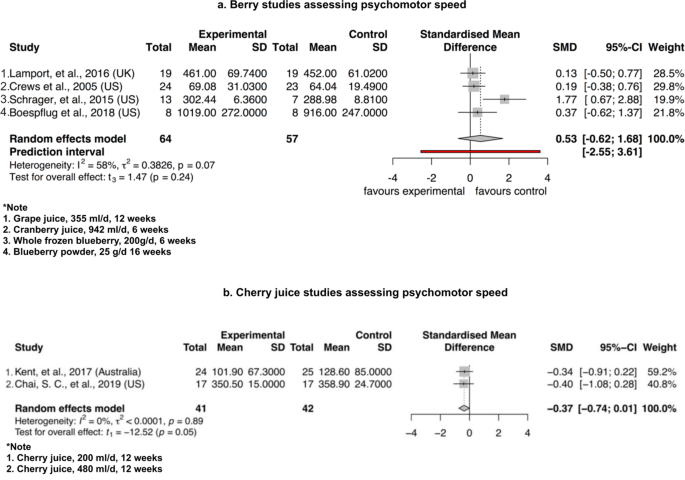
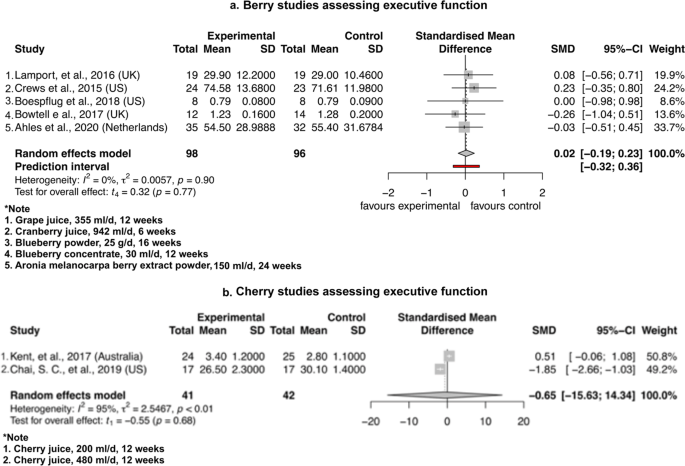


Our systematic review collected a range of frozen, freeze-dried, powdered and juiced fruit interventions, specifically berries (n = 12), reporting positive findings on cognition or mood. The largest portion of studies involved fruit juices (nine out of 16 studies) with grape juice (n = 3) and cherry juice (n = 3) being the most intensively studied supplementations. As demonstrated by the meta-analysis, two cherry juice studies including 41 participants receiving cherry juice with mean dosage of 340 ml/d for 12 weeks induced a borderline significant improvement in psychomotor speed. However, it is important to note that only two studies were included and one of those had a high risk of bias [41], which limits the impact of this finding.
Our meta-analyses suggested no differences between the intervention and control groups in any cognitive domains following berry or other fruit-based supplementations. No improvement was observed on any outcomes including executive function and memory, which does not support the notion that the consumption of specific fruit powders or other fruit juices will confer a cognitive-protective benefit. Overall, the individual interventions showing improvements in our systematic review still require further substantiation given that the meta-analysis only suggests that cherry juice may have cognition-protective potential.
The systematic review suggested the potential for whole blueberries, blueberry juice concentrate, blueberry powder, grape powder, grape juice, cherry juice, orange juice and cranberry juice supplements to improve cognitive health. Supplementing grape juice also showed potential to improve mood. However, from the meta-analysis, we only found a borderline significant improvement in psychomotor speed following chronic consumption of cherry juice. The participants of the cherry juices studies included here were older, healthy (> 60 years old) or have dementia. It’s worth noting that slower psychomotor speed has been found to be associated with increased risk of all-type dementia (hazard ratio [HR] 3.41, P < 0.0001), Alzheimer’s disease-type dementia (HR 3.18, P < 0.0001), Parkinson’s disease (HR 2.98, P = 0.04) and depressive symptoms (HR 1.53, P = 0.03) [65], and is therefore related to chronic mobility disorders and important for health wellbeing. Cherry juice has high content of flavonoids catechin, epicatechin, procyanidins and anthocyanins [66, 67] and the most recent evidence points towards potential benefits of supplementing flavonoids, ranging from 60 to 768 mg daily on attention, working memory, and psychomotor speed, but the study findings were not conclusive [68].
In our review, grape powder and juice interventions have shown improvement to cognition or mood for at least one of the cognitive aspects [43, 52, 59, 60, 62]. Studies supplementing blueberry powder, cherry juice and cranberry juice also have reported effect on cognitive or mood benefit [46, 48, 50, 64, 69, 70]. Polyphenol-rich fruit juice interventions that reported positive effect on cognitive health have provided anthocyanin levels ranging from 138 to 387 mg or 435 to 450 mg total polyphenol levels daily; fruit powder interventions with positive findings on cognition have provided either anthocyanin levels ranging from 12.5 to 460.8 mg or 70 mg total polyphenol levels daily. Small molecules, especially anthocyanins are the major class of polyphenols in berry and cherry fruit (approximately 92 mg/100 g) [41]. However, the anthocyanin profile in polyphenol-rich fruit is a factor explaining variability in the biological responses observed in dietary interventions with this fruit. For instance, blueberries contain primarily delphinidin, malvidin, and petunidin whereas raspberries and blackberries contain primarily cyanidin, pelargonidin and malvidin [71]. Although consumption of anthocyanins can be in the range of 200 mg/d [72], the bioavailability appears low as they are believed to be poorly absorbed and rapidly excreted [73]. The rate of polyphenol absorption from blueberries could be influenced by dose administered [74], and the matrix of the food source [75], and several studies have suggested that the rate of anthocyanin absorption is influenced by their chemical structure. The bioavailability of polyphenol metabolites will vary between individuals and is dependent on complex absorption, distribution, metabolism and excretion (ADME) mechanisms involving phase I and II metabolism of phenolic molecules [76]. Also, a systematic review has shown that the intake of fruit juice offered similar protection against cognitive decline to the intake of whole fruit [77] and thus a similar proportion of bioactive phytochemicals must remain in the processed products. Unfortunately, the current meta-analyses did not sufficiently support a role for fruits or other fruit forms to improve cognition and mood.
Although our meta-analysis lacks evidence to support improvements in mood by specific fruit interventions, another meta-analysis with 10 observational studies involving 227,852 participants suggested an inverse association of fruit (RR 0.83, 95% CI [0.77, 0.91]; P = 0.006) intake with risk of depression [78]. A previous systematic review has also assessed the association between cognitive benefits and fruit consumption but only included limited evidence from juice interventions, where improvements to memory in mildly cognitive-impaired adults after 12–16 weeks of consumption were illustrated [12]. The high levels of flavonoid metabolites (e.g. anthocyanidin) from flavonoid-rich fruit can transport through blood brain barrier into regions such as the hippocampus to impact on memory and learning [79]. In the pathogenesis of neurological conditions such as Parkinson’s disease, the mechanisms of action of flavonoids have been shown to counteract the damage induced by reactive oxygen species (ROS) and neuroinflammation, modulate synaptic signalling and increase cerebrovascular blood flow [77]. The (poly)phenol metabolites attenuated neuro-inflammatory processes via regulation of nuclear factor (NF)-κB translocation into the nucleus and modulation of IκBα levels by crossing the blood brain barrier endothelium and exerting beneficial effects in different neuronal systems (e.g. cell lines, primary cultures and in vitro three-dimensional human cell model) [80]. Therefore, cerebral metabolism of polyphenol and/or flavonoid molecules plays an important role in the preservation of cognitive function [81].
Currently, the majority of evidence in this area has included the association between intake of fruit combined with vegetable intake and cognitive function. However, the evidence on the association between specific fruit groups and/or forms of fruit with cognition is limited. Although insufficient data were entered for meta-analysis for each fruit subgroup, blueberry and grape powders providing 12.5–460.8 mg/d anthocyanin content were supplemented the most apart from fruit juice and could also be an effective method to increase overall fruit consumption and benefit cognition with moderate to large effect sizes reported [41, 44,45,46,47,48, 50,51,52, 57, 59,60,61]. Long-term investigations assessing the impact of whole blueberry intervention on cognition are also scarce and worth exploring, given that a large effect size was reported [47]. Thirteen out of 16 total RCTs in this review recruited older participants and only one study recruited young adults (18 years old athletes) without any improvements to cognition or mood shown. It could be due to that participants with relatively higher cognitive level at the baseline were unlikely to achieve higher cognitive response further following a dietary intervention due to ‘ceiling effects’ [82].
Only one intervention examined the effect of long-term supplementation with whole frozen fruit on cognition in this review, no fresh fruit was identified in the previous interventions, which could be due to the difficulty of storage and allocation during the intervention. Fresh whole fruit is generally how the fruit is consumed, which highlights a novel and necessary intervention in future studies. So far, research has mainly focused on fruit juice interventions, nevertheless, we should take free sugar reduction into account and the daily consumption of fruit juice should not exceed 150 ml per day as set out by Public Health England guidelines [83]. The sugar found in fruit juice is mainly classified as ‘free’ sugars, such as sucrose, whereas in whole fruit the sugars are classified as intrinsic. Increased dietary fructose following sucrose intake is reported to increase de novo lipogenesis and very-low-density lipoprotein levels, which has been shown to increase the risk of developing non-alcoholic fatty liver disease [84]. Therefore, any health promotion effects of increasing fruit intake by juice consumption should be made with caution. Validation of metabolites and biomarkers for cognitive impairment should be incorporated into future trials to help identify the potential mechanisms underlying any influence between fruit-based intake and cognitive health. Due to the impact of fruit processing and food matrix, cognitive research implementing fruit interventions should also consider controlling for factors likely to influence bioavailability in a chronic intervention (>1 week) [26].
To our knowledge, this is the first systematic review and meta-analysis to compare the impact of various forms of specific fruits in isolation from other food supplementation on cognition. Firstly, in addition to the comprehensive search of the literature in the topic, we also applied the newly developed Hartung-Knapp-Sidik-Jonkman method for modelling random effects in meta-analysis. Secondly, the interventions included in this review have assessed either general cognitive performance or specific cognitive domains using well-established cognitive tasks.
There are limitations to our review. Although our systematic review showed positive results in interventions supplementing with blueberry or grape, the small sample size and moderate to high risks of bias for studies quality that used the same cognitive task in the searched literature may partially explain the lack of support from our meta-analysis. It also should be noted that generally the cognitive tasks chosen in each intervention study are not uniform because of the polyfactorial nature of neurocognitive measures [85]. In the current review, not all the domain-specific tasks data could be entered into meta-analyses assessing the effect of the same type of fruit interventions on the specific cognitive domain, thus the effect size derived from the meta-analyses was inevitably under-estimated.
Study quality of 13 studies as assessed by risk of bias in this review presented with moderate to high risks in either randomisation process, intervention deviations, missing outcome data, and/or the measurement of the outcomes (Fig. 2). A crossover design is the most appropriate design when comparing a nutritional intervention against placebo since all participants serve as their own control and only three studies applied a crossover design [43, 57, 58]. Only one citrus intervention RCT supplementing orange juice was included, which led to limited exploration of the effect of citrus fruit intervention on cognition [43]. Due to the small number of studies in each pooled analysis, we were also unable to evaluate whether the effects can be influenced by participant characteristics (e.g. physical activity, sex) or to explore the high heterogeneity by subgroup analysis.
This systematic review has identified berries with the most potential to benefit cognition, however, the meta-analyses only supported a borderline significant improvement to psychomotor speed by two small studies supplementing cherry juice with mean dosage of 340 ml/d for 12 weeks. To our knowledge, this is the first review of the impact on cognitive health following consumption of different varieties of fruit and different processed forms such as freeze-dried powdered fruit or fruit juice. Apart from fruit juice, promising results were also demonstrated among limited studies supplementing whole frozen or powdered forms of fruit (grape powder, frozen and powdered blueberries).